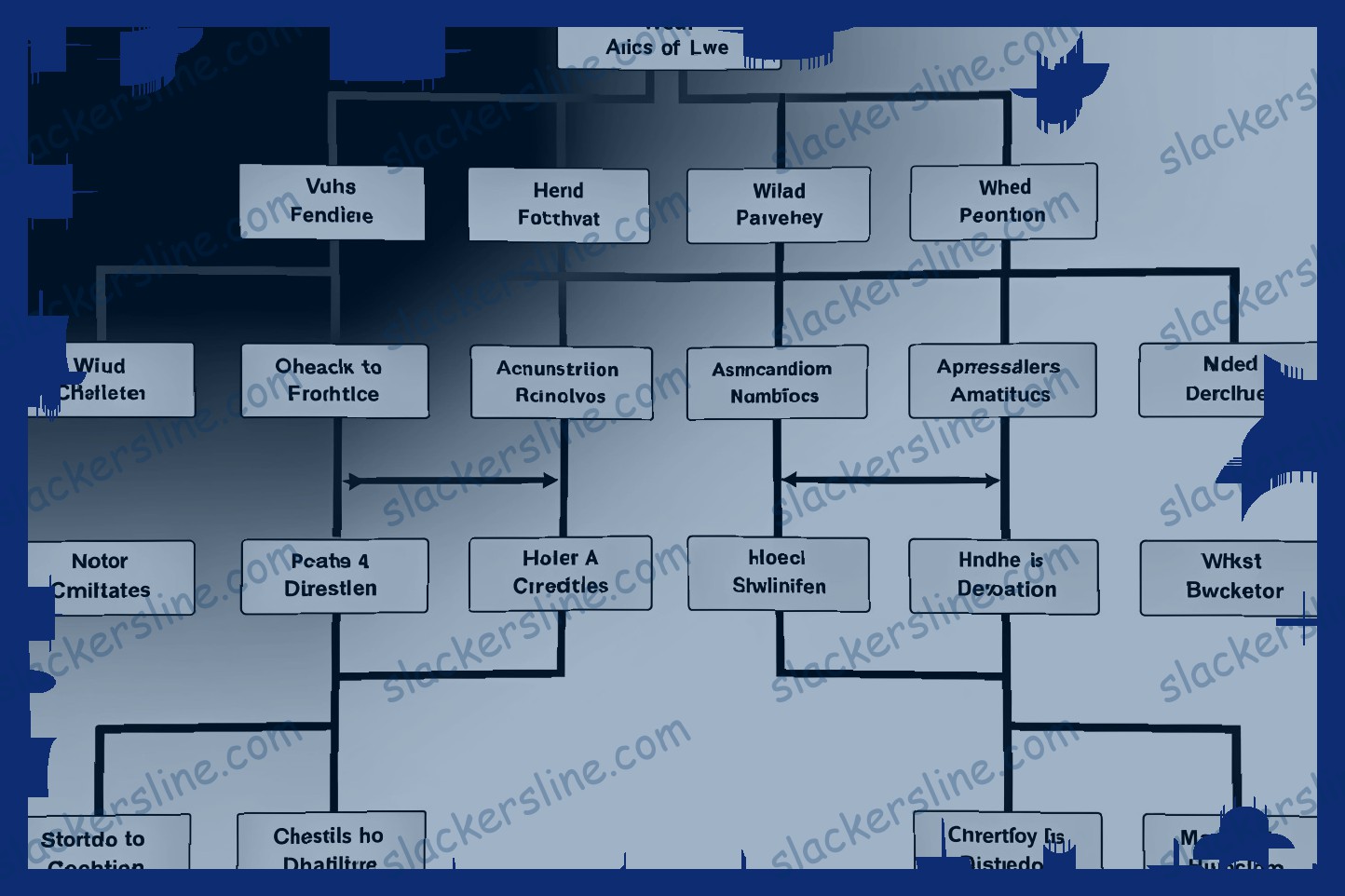Heirs at Law Defined
Heirs at law are those people in line to inherit your assets in the absence of a will or trust. More succinctly, they are your next of kin. These typically include a surviving spouse and, if your spouse doesn’t survive you, your children.
If you have no spouse or children, your heirs at law will be your parents, and if you have no living parents, then your siblings and their children (your nieces and nephews). It can go on from there until we get out to distant relatives like cousins, etc. But the first few generations of heirs at law are the important ones for purposes of this discussion.
For example, let’s say that you have a surviving spouse and both your parents are already dead. If so, then your children will be your heirs at law. But if you don’t have any children and your parents are dead, your brothers or sisters will be your heirs at law , and so on.
The idea behind these provisions is that you probably want your property to go to your family or your loved ones. If you don’t have a family or loved one, maybe you want to keep it out of the hands of the state. Either way, your heirs at law will be determined according to the laws of the state in which you lived when you died.
Don’t confuse the fact that your heirs at law may be the same as the beneficiaries specified in a will. Although they could be the same, state law provides for a much broader range of people that will be considered heirs at law than would be specified in a typical will. And that’s because most people want to limit the people who inherit from their estate to only those individuals who are their loved ones (i.e., family, charities, etc.), while other persons may have a broader set of heirs at law available in the event that no one else survives you.

Classification of Heirs at Law
Heirs at Law in Simple Terms
Type One: Direct Descendants
The direct descendants of a decedent are the folks who are down line of him or her and without whom you wouldn’t have had the decedent. Simply put, children are direct descendants. They are also the direct descendants of their parents and so on. In other words, your parents, your siblings and your children are all your direct descendants. But, your cousins and grandparents are not. See the graph illustration below, which shows in pictorial form the hierarchy of direct descendants of the decedent in the center:
Type Two: Ancestors
The ancestors of a decedent are the folks who are up line of him or her. In other words, your parents are the ancestors of you and your siblings. Your grandparents are the ancestors of your parents, your great parents are the ancestors of your grandparents and so on. In case you haven’t already guessed, this means your children, grandchildren, your siblings and parents are not your ancestors. Illustrated with the graph above, ancestors are the folks above the decedent in the graph.
Type Three: Collateral Relatives
The collateral relatives of a decedent are all those who do not belong to the direct descendants nor the ancestors but are related to either or both. In simple terms these are the cousins, nieces, nephews, aunts, uncles and others who are related to you but are not your direct ancestor or descendant. The kids of your siblings are your collateral relatives but they are your siblings children and your children’s cousins. They are your collateral relatives and your descendants cousins at the same time as illustrated in the graph above.
Who are Heirs at Law?
Heirs at law are those persons who would inherit your property if you were to pass away intestate, or without a will. In Minnesota, you would typically rely on the Minnesota intestacy laws to determine who your heirs at law are. These laws follow a basic hierarchy in order to determine immediate descendants first, and then from there to more distant relatives. The state attorney will typically prepare an Order that lists all of the heirs at law, based on the initial information provided by you. If a person servicing as the Personal Representative receives additional information, they may need to make a further inquiry into the heirs at law and update the state attorney.
Obligations and Privileges of Heirs at Law
Heirs at law, upon the death of a person, are entitled to inherit their share of the estate (pursuant to the laws of intestate succession) or to receive their share pursuant to a will that names them as an alternate beneficiary. In general, an heir at law has a right to his or her inheritance no matter how the estate is administered, with one exception: If the estate has named someone else to receive the inheritance by way of a legally valid pre or post nuptial agreement.
How the estate is to be administered is determined by the allegations in the petition for probate. That is to say, the petition contains statements about and evidence of creditors, administration costs, and other relevant factors. The ultimate purpose of administration is to get the assets that are included in the probate estate to the heirs at law (and those who are named physically or constructively in the will.)
An administrator may give an heir at law his or her share if there is no dispute concerning the assets of the estate or with the creditors. A personal representative may also distribute assets to the heirs at law during the administration of the estate , but must do so responsibly. This means an administrator or personal representative has a duty to not distribute property if there is a dispute regarding the rightful owner of said property or if the heir at law needs to wait for enough creditors to file claims and for a determination to be made that the creditors have all been satisfied.
Whether an heir at law is the nominee or alternate beneficiary of the will, the heir at law’s claim to her inheritance is valid only if the purported will is admitted to probate. Now, the probate court may admit a will to probate without holding a trial if there are no disputes concerning the will, the will was unambiguously signed, and the will was executed in accordance with the statutory requirements of a valid will. However, a will can be contested and the court will eventually hold a trial on the issues. Some common issues that are the subject of a will contest are that the will was not signed by the testator or that the will was signed by the testator while not in a normal state of mind (such as while he or she was under the influence of drugs or alcohol.) Also, if a party believes the decedent did not intend to execute his or her Last Will, the court may hold a trial.
Identifying Heirs at Law
In the administration of estates, there can be challenges in identifying who the heirs at law of a decedent are. Some of the more common issues that arise are disputes over legitimacy and missing heirs, as well as confusion over who qualifies as kin under the laws of their jurisdiction of residence. Such issues are resolved through statutory construction and the application of common principles of statutory interpretation. The problem of implicated versus alleged kinship is particularly challenging. In some jurisdictions, when illegitimacy is asserted, the court may allow an exception to traditionally accepted presumptions in determining who is or is not an heir at law. In some states, statutes provide that an illegitimate person may inherit as if he were legitimate if he was: In some cases, the court may consider evidence such as birth records, court adjudications, representation to the public, or lack of paternity need not raise doubts as to paternity. In jurisdictions where ancestry is involved, the important question is one of fact, i.e. whether the claimant is in fact a descendant of the alleged ancestor. Also, can an illegitimate child inherit from the decedent’s family? Again, some jurisdictions have statutes that address this issue. For instance, California Family Code § 240 offers no time limit to file an action to establish parentage. New York, however, has more restrictive rules in that its paternity statute provides for a period of two years in which an illegitimate child can bring a petition to establish paternity and inherit from his father. However, under New York law, there is no period of limitations applicable to actions to establish maternity, even if the alleged father is dead. While illegitimacy may be recognized, many jurisdictions disallow claims of kinship by adoptive parents overlooking the lawful adoption of a child. Aside from illegitimacy, the other major problem in identifying, locating, or providing service is whether the heir is dead. Proper service of process is required throughout the administration and without proper notice, a claim can be invalidated or a court will not be able to exercise jurisdiction over a party whose presence is required in the estate. In such cases, the service of the original process is strictly considered so that amended process will not remedy the effect of incorrect service. The power of the court to bind a party by its decree is a matter of constructive service of process on the absent parties.
Legal Considerations and Consequences
In many cases, the terms "heirs at law" and beneficiaries are used interchangeably to refer to a person that has interests in the estate of a decedent. The difference is that a beneficiary is expressly named in a will or trust, while an heir at law is not. It often happens that a person may qualify as both an heir at law and a beneficiary.
At times, the terms "taking" and "succession" are also used to refer to the same person. "Taking" means that a person receives property from the estate either directly or indirectly. "Succession" or "heirs at law" means to inherit property as a result of a death. Although the terms heirs and beneficiaries can be used interchangeably, please remember that an heir is the person entitled to inherit property, while a beneficiary has been expressly stated in a will or trust to receive property. Further, only the heirs of a decedent will inherit property if the decedent died without any probate: A person may qualify as both an heir at law and a beneficiary. When a person inherits property from the estate of a decedent, the person’s legal status as an heir at law will ultimately define the person’s entitlement to distribution of a decedent’s estate. An heir is entitled to inherit property based on the familial relationship that he or she shares with the decedent. The decedent by definition has no control over who inherits property after his or her death. If there is a valid will in place at the decedent’s passing, then the terms of the will will control distribution. However, if the decedent has failed to create a valid will, distribution of the property of the decedent is governed by state intestacy law .
Our firm often represents persons who contest a will. To that end, our typical approach to representing will contestants is to establish that the decedent lacked the testamentary capacity to create the will. Please note that testamentary capacity is completely different from competency. Competency is a legal term used to describe the general ability of a person to make his or her own decisions regarding health care, finances, and assets. Testamentary capacity merely requires proof that the decedent had the mental state that would allow him or her to properly understand the testamentary act of making a will.
The exact requirements to properly create a will are governed by the formal requirements imposed by the state in which the decedent resided. These formal requirements typically include the signature of the testator, presence of witnesses, and testator’s acknowledgment of understanding the will. Another technical requirement is that the person who is not a beneficiary under the will must draft the will in order for the will to be valid. The reason is that such a will cannot be the result of undue influence.
The famous case of Smothers v. Hanson, California Civil Code 51 refers to an heir at law that was once married to a non-consenting person. In this case, a trial court determined that the forced marriage and mistreatment of the heir at law by the non-consenting spouse barred the non-consenting spouse from inheriting the property and the heirs became the sole owner of decedent’s estate. Upon appeal of the trial court decision, the California Supreme Court agreed with the trial court.

